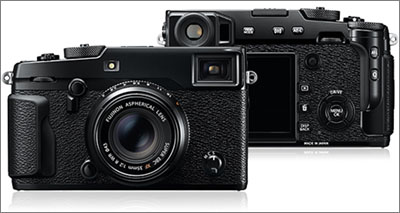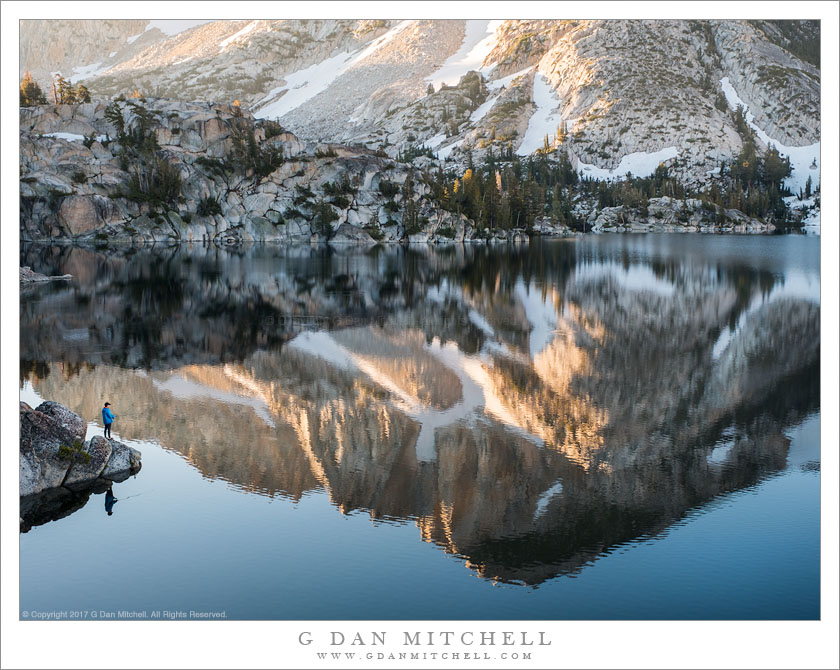Reader “Scott” recently wrote with the following question about the Canon R mirrorless camera:
“Could you comment on the Canon EOS R? Your thoughts on mirrorless going forward? I’ve been reading a LOT on Fred Miranda, watching YouTube tutorials by Alex Barrera, etc. I know from reading that the RF glass appears to be amazing. As a trekker, hiker who is looking to maximize lighter gear with excellent IQ, this seems to be a good plan for me. Thanks for your insights!”
In a way I am very qualified to answer this… and in another way I’m not qualified at all! Read on to see why.
For those who may have not heard, the Canon “R” system (currently with two cameras, the “R” and the less expensive “RP”) is a new line of cameras from Canon using full frame sensors, a mirrorless design, and the new “RF” lens mount. While Canon has produced mirrorless cameras with smaller sensors for some time, these new bodies mark the company’s first entry into the mirrorless full frame camera market. Although Canon’s mirrorless cameras arrived late (by comparison to companies like Sony, Olympus, and Fujifilm), it seems that Canon carefully plotted out the path to their release. In addition to these two first bodies, it is all but certain that a high megapixel camera with the lineage of the 5Ds/5DsR will be next, and after that we can expect successors to other Canon DSLR designs.
The mirrorless design eliminates the pentaprism and the “flapping mirror” of DSLRs, and this allows the cameras to be made smaller and lighter. In addition, because lenses no longer need to clear the moving mirror the lens mount can be positioned closer to the sensor plane. This has some potential advantages, especially with “normal” to somewhat wide angle lenses, which can theoretically be made smaller. Canon’s lens strategy with the new mount has two parts. First, all existing EF lenses will work on the new cameras by means of a “pass through” adapter. Reportedly there is no loss in lens functionality, so photographers can continue to use their existing lenses without problems. Second, Canon is fast-tracking the introduction of new “native” RF lenses that use the R mount — and in many cases Canon appears to be making them “best of breed” lenses that exceed the performance of the older EF equivalents.
So, about that “I’m qualified to comment and I’m not” remark I made earlier… I have been shooting with a Fujifilm mirrorless system for about seven years or a bit more, relying on that system for the street and travel photography part of my work. So I’m very familiar with mirrorless cameras in general. On the other hand, my actual experience with the “R” is limited to playing with one in a shop for a short period of time. I cannot report on image quality, and my ability to analyze ergonomic issues is quite limited.
Like almost all mirrorless cameras, the R bodies use electronic viewfinders (EVFs) and do away with the traditional optical viewfinders. There are both pluses and minuses here. An optical viewfinder (OVF) is always a real time display, while an EVF will necessarily have at least some latency — in other words the display will lag the real world. The amount of latency is becoming quite small, but it can never disappear entirely. Some users don’t like (or don’t think they will like) EVF displays. My own experience is that I mostly forget that I’m using one after a short period of use. EVS displays have some real advantages, too. They can display all sorts of useful data right on top fo the image. They show the exact frame of the image — unlike DSLRs which usually are “off” by at least a small amount. They also work really well in very dark conditions, where exposure simulation may allow you to see a scene that might otherwise be nearly invisible.
One downside of mirrorless cameras is that they consume battery power more quickly than typical DSLRs. I might get over 1000 exposures from my DSLR in many situations, but I rarely get 300 with my Fujifilm mirrorless system before I have to change batteries. On the other hand, when I shoot in live view mode — which I usually do when photographing landscapes — battery life is diminished in a way that is about the same as what we get from mirrorless bodies.
Scott’s question is specific to trekking, so let’s look at that usage a bit.
Scott prioritizes lighter gear. Does the mirrorless system provide that? The camera bodies are certainly smaller and typically lighter than their DSLR equivalents, so they look good from that perspective. And for travelers who are constrained by the amount of space they have in bags and suitcases, the smaller body is an attraction. However, if you use large lenses on your DSLR system… you’ll probably use lenses that are roughly the same size and weight on your mirrorless system. So the overall size/weight of your gear many not decrease as much as you expect. However, if you can work with smaller lenses — say kit zooms or small primes — you can certainly get a relatively small system based these mirrorless cameras.
Depending on where you are trekking and on how many photographs you tend to make, the decreased battery life of mirrorless bodies could be a concern. If you are out long enough that you are carrying a charging system, you are probably fine, though you’ll likely have to rotate batteries more often. If you go out for a week at a time carrying enough batteries to see you through the trip… you many end up carrying more batteries with the mirrorless camera. (This can play into the overall weight comparison.)
There can be other advantages to these smaller mirrorless bodies. On the technical side, these bodies have fewer moving parts and rely less on mechanical components, potentially making them more reliable and less likely to break down in the field. On the subjective side, in some situations — such as photographing people on your travels — a smaller camera, especially when coupled with smaller lenses, can make your presence less intrusive and many help you get photographs where a larger camera might alert your subjects and change their appearance.
Finally, the writing is on the wall when it comes to how cameras will evolve in the next few years. That future is almost certainly going to be mirrorless. We may miss OVF displays, but I think we are going to like many of the other features of these cameras. As for me, I currently do half of my photography with a DSLR and half with a mirrorless camera… and I fully expect that five years from now I’ll be using only mirrorless.
G Dan Mitchell is a California photographer and visual opportunist. His book, “California’s Fall Color: A Photographer’s Guide to Autumn in the Sierra” is available from Heyday Books and Amazon.
Blog | About | Flickr | Facebook | Email
Links to Articles, Sales and Licensing, my Sierra Nevada Fall Color book, Contact Information.
All media © Copyright G Dan Mitchell and others as indicated. Any use requires advance permission from G Dan Mitchell.
“


